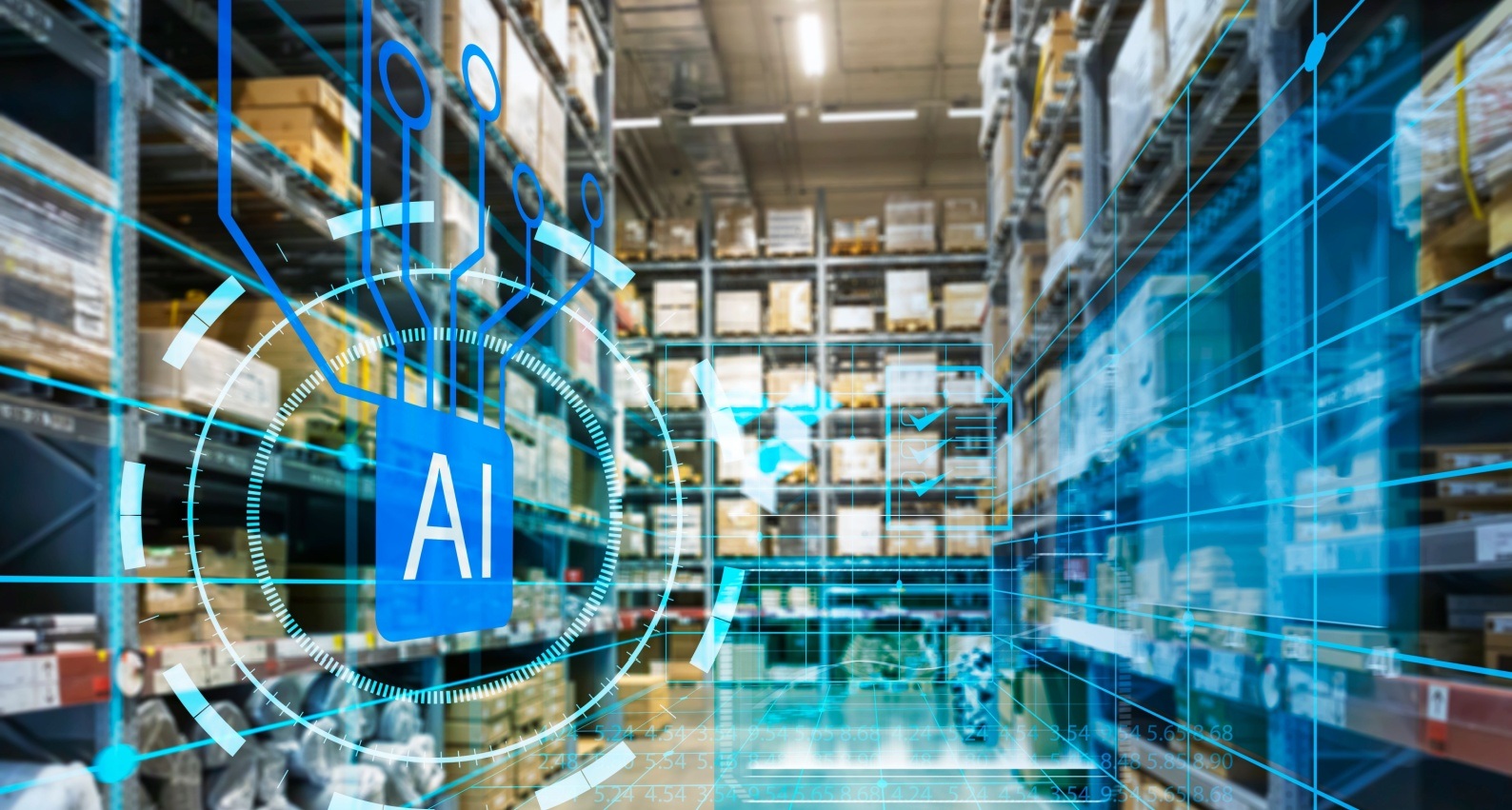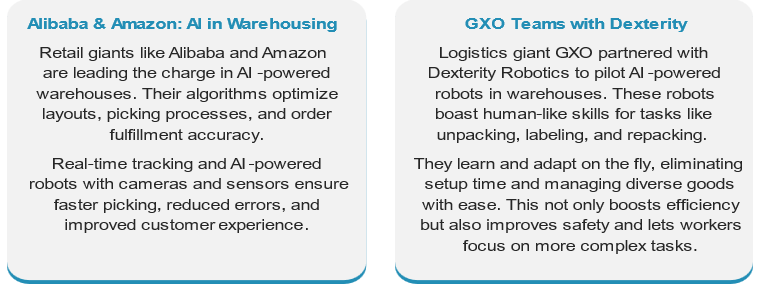Warehouses of the Future: Powered by AI
Published on 19 Jun, 2024

Artificial intelligence (AI) is revolutionizing warehouses, bringing smarter inventory, robotic workers, and real-time control. This leads to improved efficiency, cost savings, and a future filled with collaborative robots and self-learning systems. Retail giants like Alibaba and Amazon are already on board, and GXO's partnership with Dexterity Robotics showcases the potential for human-like robots. This article explores how AI is poised to transform warehouses into intelligent ecosystems, boosting logistics across the board.
The logistics and supply chain industries, long reliant on manual processes, are experiencing a revolution driven by AI. The warehouse, once a realm of forklifts and manual processes, is at the forefront of this transformation fueled by AI. Let us dive deep into AI’s transformative power in warehouse management and explore how it is reshaping the industry landscape.
Optimizing Warehouse Ecosystem
AI's impact on warehousing is multifaceted, and some key areas of impact are as follows:
- Smart Inventory Management: AI algorithms analyze historical sales data, market trends, and other factors to predict demand with greater accuracy. This enables businesses to optimize inventory levels, reducing the risk of stockouts and overstocking.
- Warehouse Layout and Design: AI can analyze product dimensions, demand patterns, and access frequency to suggest optimal storage configurations. This maximizes space utilization and facilitates faster picking and retrieval of goods.
- Automated Picking and Packing: Demand for automated guided vehicles (AGVs) and autonomous mobile robots (AMRs) is growing for picking and packing. This diminishes reliance on manual labor, improves picking accuracy, and frees up human workers for higher value tasks.
- By 2027, the AGV and AMR markets are expected to grow 24% and 43%, respectively.
- This growth is driven by the need for smarter warehouse space utilization.
- Companies deploy these robots to streamline distribution and fulfilment.
- Predictive Maintenance: AI analyzes sensor data from warehouse equipment to predict potential failures before they occur. This facilitates preventive maintenance, minimizing downtime and ensuring smooth operations.
- Real-time Visibility and Control: AI-powered sensors provide real-time data on everything from inventory levels to environmental conditions. This allows for better decision-making, faster response times, and improved control over the entire warehousing process.
Benefits of AI-powered Warehousing
The adoption of AI in warehousing offers a multitude of benefits including the following:
- Increased Efficiency: AI automates repetitive tasks, streamlines workflows, and optimizes space utilization, leading to significant productivity gains.
- Reduced Costs: Lower labor costs, minimized errors, and optimized inventory management result in huge cost savings.
- Enhanced Safety: AMRs and AI-powered systems can operate in hazardous areas, reducing risks for human workers.
- Scalability and Agility: AI-powered systems can adapt to changing demand patterns and business needs, allowing for greater scalability and agility.
Future of AI in Warehousing
As AI continues to evolve, we can expect even more transformative applications in warehousing. Here is a glimpse into the future.
- Collaborative Robotics: AI would further enhance the collaboration between humans and robots, with robots managing the heavy lifting and humans focusing on decision-making and complex tasks.
- Self-learning Warehouses: Warehouses would become more intelligent, with AI systems continuously learning and adapting to optimize operations in real-time.
- Hyper-personalization: AI would be used to personalize order fulfillment based on individual customer preferences and needs.
AI in Practice: Data-backed Case Studies

Conclusion
AI is rapidly transforming warehousing from a labor-intensive operation into a data-driven and intelligent ecosystem. By embracing AI, businesses can achieve significant gains in efficiency, cost savings, and customer satisfaction. As AI technology continues to develop, the future of warehousing promises to be even more intelligent, automated, and responsive.

